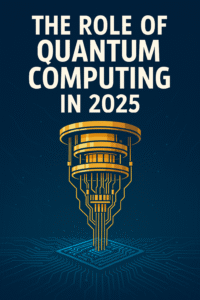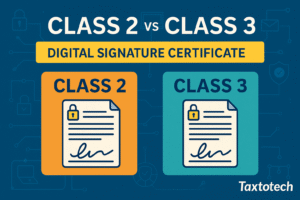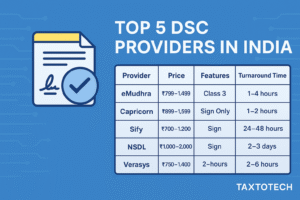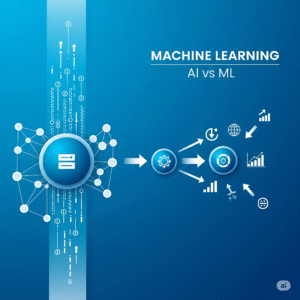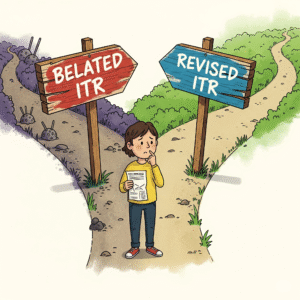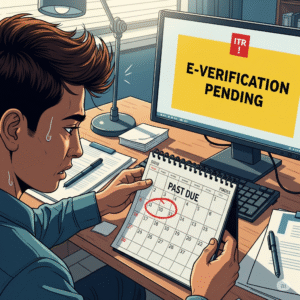🔐 Introduction: Why Knowing Your DSC Type Matters
In 2025, as more processes go digital in India—whether it’s e-filing income tax, submitting tenders, or registering a company online—choosing the right Digital Signature Certificate (DSC) has become crucial.
At Taxtotech, we often hear this confusion: “Should I get a Class 2 or Class 3 DSC?” Well, you’re not alone!
In this guide, we break down the difference between Class 2 and Class 3 DSCs, helping you make the right choice based on your usage.
📌 What Is a Digital Signature Certificate?
Before diving into the differences, let’s revisit the basics.
A Digital Signature Certificate is an encrypted key used to sign documents digitally and prove the identity of the signer. Issued by licensed Certifying Authorities (CAs), DSCs are governed by the Information Technology Act, 2000.
Depending on the level of security and validation, there are mainly two classes of DSCs now used in India:
- Class 2 DSC – Lower security, identity proof via KYC.
- Class 3 DSC – Higher security, used for sensitive transactions like e-tenders.
🧾 Quick Comparison: Class 2 vs Class 3 DSC
Here’s a summarized table that compares both:
🔍 Table 1: Key Differences Between Class 2 and Class 3 DSC
| Feature | Class 2 DSC | Class 3 DSC |
|---|---|---|
| Identity Verification | Basic (KYC via Aadhaar/PAN) | In-person / Video verification required |
| Security Level | Medium | High |
| Use Cases | MCA filings, GST, Income Tax | E-tenders, e-auctions, DGFT, high-security |
| Authentication Method | Based on documents | Strong authentication with token |
| Validity | 1 to 3 years | 1 to 3 years |
| Availability | Commonly available | Slightly restricted |
🧠 Deeper Dive: Use Cases for Each Class
Let’s take a closer look at the typical usage of each type of DSC:
✅ Use Cases of Class 2 DSC
- Filing Income Tax Returns (ITR) on behalf of self or companies
- Filing GST Returns
- MCA21 filings for company incorporation
- Signing documents for Provident Fund (EPFO)
Ideal For: Individuals, professionals, small business owners
✅ Use Cases of Class 3 DSC
- Participating in Government e-Tenders (GeM, NIC, etc.)
- E-auctions and bidding platforms
- Filing applications on DGFT portal for import/export
- Patent and trademark filings
Ideal For: Corporates, contractors, exporters, legal professionals
💼 Why Was Class 2 Merged in Many Cases?
As per the Controller of Certifying Authorities (CCA) in India, from January 2021, Class 2 DSCs were discontinued and merged with Class 3 to strengthen data security and streamline issuance.
So while you may still hear “Class 2 DSC”, most providers now issue Class 3 DSCs for all use cases, including income tax and GST filing.
🧾 Price Comparison: Class 2 vs Class 3 in 2025
While Class 2 was cheaper, now with standardization under Class 3, pricing varies based on the provider and usage.
💰 Table 2: Approximate Pricing of Class 2 & Class 3 DSCs in 2025
| Provider | Type | Price (1 Year) | Price (2 Years) | Features |
|---|---|---|---|---|
| eMudhra | Class 3 | ₹899 | ₹1,299 | Sign + Encrypt |
| Capricorn | Class 3 | ₹999 | ₹1,499 | Sign Only |
| Verasys | Class 3 | ₹849 | ₹1,399 | Includes USB token |
| Sify | Class 3 | ₹1,099 | ₹1,599 | Business-ready |
💡 Taxtotech Tip: Look for bundled offers that include a secure USB token, especially if you’re using the DSC frequently.
💡 Which DSC Should You Choose?
If you’re still wondering what’s right for you, here’s a simple guide:
| Your Role / Use Case | Recommended DSC Class |
|---|---|
| Filing taxes or MCA documents | Class 3 (previously Class 2) |
| Exporter using DGFT portal | Class 3 |
| Government e-tender bidder | Class 3 (mandatory) |
| Lawyer handling court filings | Class 3 |
| Individual signing PDFs | Class 3 |
🛡️ Security Perspective
The Class 3 DSC provides an additional layer of trust and protection. It comes with:
- Mandatory 2-factor authentication
- Often includes USB e-Token
- Supports signing + encryption, preventing data leaks
With India’s Digital India mission, Class 3 is now the new standard.
🔗 Related Resource
Want to learn how to apply for a DSC online or compare providers?
Explore our other helpful guide here:
👉 https://taxtotech.com/how-to-apply-digital-signature-certificate-online-india
❓ FAQs: Class 2 vs Class 3 DSC
Q1. Is Class 2 DSC still valid in 2025?
Answer: No, it has been phased out and merged with Class 3. All new DSCs are issued as Class 3 now.
Q2. Can I use Class 3 DSC for income tax filing?
Answer: Yes, Class 3 DSC is accepted across all platforms including Income Tax, GST, and MCA.
Q3. Is there any document difference required between Class 2 and Class 3?
Answer: Class 3 may require video verification or in-person KYC, while Class 2 was document-based.
Q4. Do I need a USB token?
Answer: Yes, most Class 3 DSCs require a secure cryptographic USB token to store the certificate.
📣 Final Thoughts from Taxtotech
At Taxtotech, we recommend Class 3 DSC as your all-in-one solution. Whether you’re a freelancer filing taxes or a business bidding for tenders, having a Class 3 Digital Signature Certificate ensures compliance, trust, and data integrity.
✅ Call to Action
If you found this comparison useful, please share it with your network, leave a comment below with your questions, or check out more guides on Taxtotech to level up your digital compliance game.
Stay digitally secure — choose wisely with Taxtotech.






